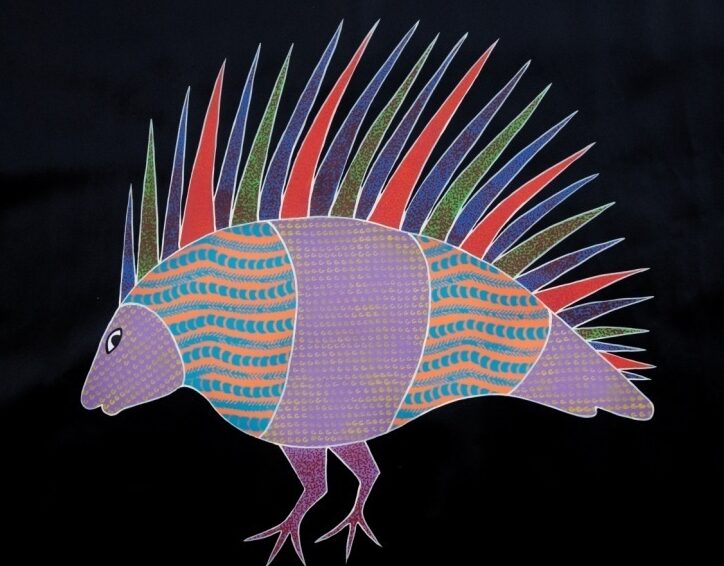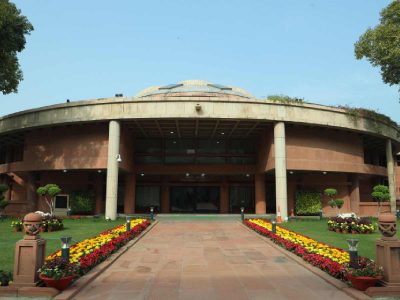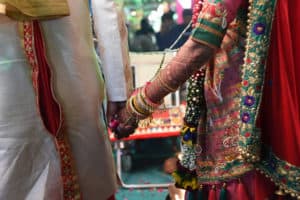According to Bhajju Shyam, a 2018 Padma Shree awardee for Gond art, the art form largely focuses on Gond kings. He says, “We paint things that depict stories from the reign of these kings and how they administered the community, besides which it also focuses on the various festivities and worshipping practices, tantra-mantra knowledge that prevailed in the community and was practised by our people. Pardhan artists also paint about cultures, folk tales and ancestral values and their presence is dominant in what we depict.”
Bhajju is known as one of the most prestigious Gond art practitioners currently. He has recently debuted a fresh series of artworks that is on show at the Ojas Art gallery in Mehrauli, alongside other artists from three different generations. His new series is composed of stencil work and includes the usage of spray work on canvas boards and papers. Patriot talked to Bhajju recently to understand the details that make Gond art so special.
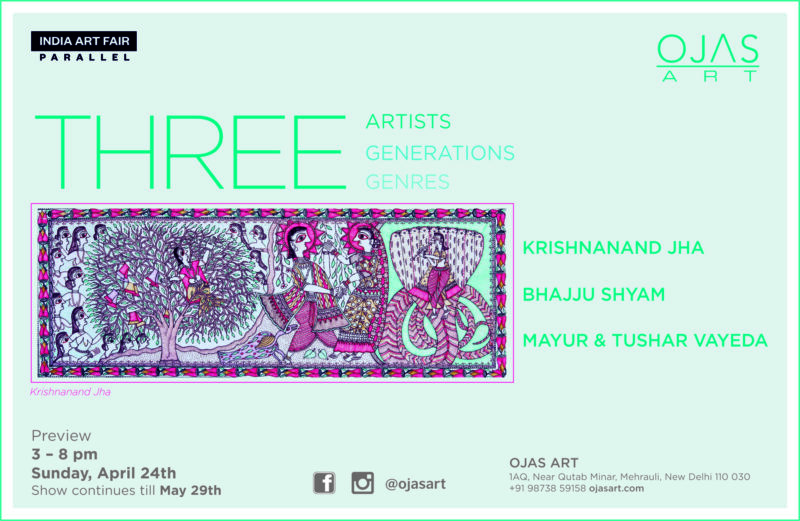
He says, “The kind of art form that I work with is known as the Pardhan Gond painting. In this form, we focus a lot on the details of the artwork.So, these details also signify a special trademark that is reflected in the artwork produced by different Pardhan Gond artists. You see my work and you would understand that these are my works. Each one of us has a different style or form within this particular practice and that is what signifies us as the practitioners of this art form.”
He explains that in his new series, while his way of painting the pieces is based on his signature style, he has experimented with the medium. He says, “For the first time I have tried something like this. We first make our paintings on a piece of paper, then we scan it digitally. We then extract an image using stencils and canvas boards.”
Talking further about his experience with the newly digitised medium, he says, “Often the digitised form of work has its own challenges. It poses a threat that makes our work prone to being duplicated and stolen more easily. But also, because of the digital mode of work, I was able to work all across the globe even during the lockdown. It is more so a good addition to how artists function and make art now in the country.”
Focus on flora and fauna is primary to his works. “I do not make too many trees and animals within my paint designs and try to create a simple piece only.”
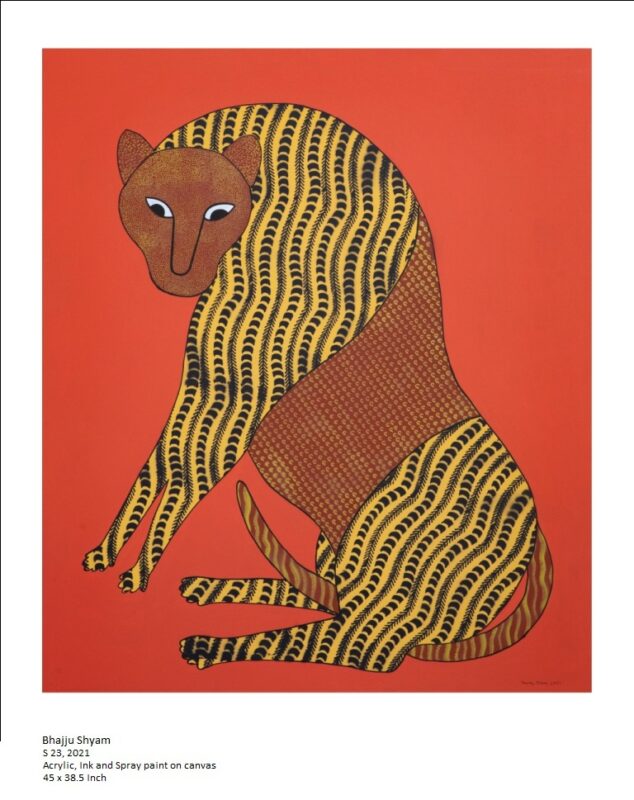
He tells us how working with stencils to create artworks on these themes comes with several difficult challenges of its own. He adds that “It causes many hardships and requires a lot of hard work to get hold of each and every point of the painting with precision. Each and every point must be covered while working with stencils in this case. We cannot afford to miss the precise lines and points that make the artwork what it is intended to look like.”
Bhajju has also authored around 15 books ever since he started working as a Gond artist. One such book is the ‘London Jungle book’ which garnered the most critical appreciation, he says. In this book, he describes his journey from his village, to a city and then to a time when he gets to leave India and visit an entirely different country.
“It talks about how a village native visiting a foreign land for the first time feels. It describes what the person is seeing throughout his journey, how he sees the airports for the first time, how he sees the people there, how he interprets the two differing cultures and the differing time zones, the vastly different culinary practices. Our colours are also different. London has such different colours that describe the city as compared to the colours that describe the Indian landscapes. So, using different colours and descriptions of what I saw, we came up with this book finally after three months of work”, he continues.
At a time when more and more Gond artists are being recognised for their work, many remain under-represented and they require more exposure, Bhajju says.
“When I started working, there were only seven to eight people who were known as Gond artists. The situation was such that only a few selected Gond artists were given all the work. But through time, our community has started gathering the much needed attention and appreciation. Through my books, and especially through the London book, I was able to provide greater reach for Gond artworks to the world. Now more and more adivasi and other Gond artists are now getting larger visibility.”
What sets apart this form of indigenous art from many others, as per the Gond Art India is that “In the olden times, the occupation of Pardhan Gond people were to sing invocations to the divine beings in nature, along with the string instrument called Bana. They were also the storytellers of the villages, who would educate the younger generation about their mythology and culture.”
Bhajju’s artworks can be found showcased till Sunday 29 May at the Ojas art gallery near the Qutub complex between 12 pm to 7 pm.
For more stories that cover the ongoings of Delhi NCR, follow us on:
Instagram: https://www.instagram.com/thepatriot_in/
Twitter: https://twitter.com/Patriot_Delhi
Facebook: https://www.facebook.com/Thepatriotnewsindia

